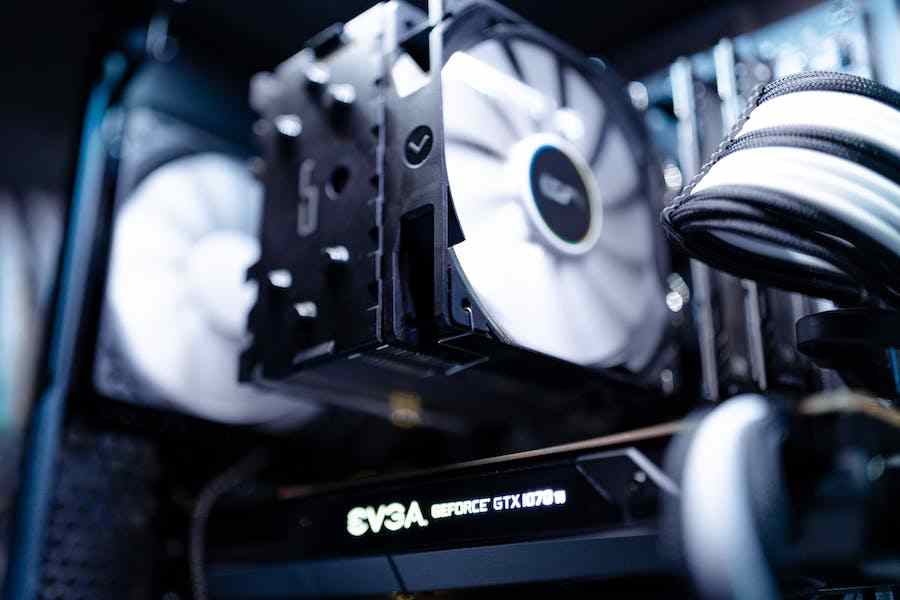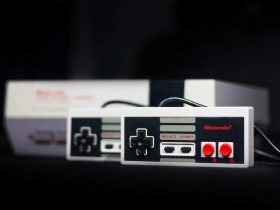The graphics processing unit (GPU) in your computer plays a critical role in rendering graphics and performing complex tasks. To ensure your GPU functions optimally, proper cooling is essential, and this is where GPU fans come into play. However, it’s common for users to encounter a perplexing issue: their GPU fans aren’t spinning. In this article, we’ll delve into the reasons behind this common problem and provide comprehensive solutions to get your GPU fans back in action. Whether you’re a gaming enthusiast, a content creator, or simply someone who values the performance of their computer, understanding and addressing this issue is crucial to prevent potential damage and ensure a smooth computing experience.
Why Aren’t My GPU Fans Spinning?
There could be several reasons why your GPU fans aren’t spinning. First, check for loose or disconnected fan cables, which can often be the culprit. Additionally, your GPU might not require active cooling at lower temperatures, so the fans may only kick in when needed. Make sure your GPU drivers are up to date, as outdated or corrupted drivers can also cause fan issues. If none of these solutions work, there’s likely a hardware problem with the fans themselves, and you may need to consider professional repair or replacement.
The Importance Of GPU Fans
GPU fans play a crucial role in the overall performance and longevity of a graphics processing unit (GPU). Their importance can be summarized in several vital points:
One of the primary functions of GPU fans is to dissipate the heat generated during the GPU’s operation. GPUs are powerful components that perform complex calculations, generating a significant amount of heat. If this heat is not adequately managed and removed, it can lead to overheating, which can cause performance throttling or even permanent damage to the GPU.
GPU fans help maintain the GPU at an optimal operating temperature. Most GPUs have a temperature threshold beyond which they reduce their performance to prevent overheating. Proper cooling ensures that the GPU operates at its peak performance level, which is especially important for gamers, content creators, and professionals who rely on GPU-intensive tasks.
When a GPU reaches high temperatures, it may engage in thermal throttling, a process where it reduces its clock speed and performance to lower heat generation. This can significantly impact gaming and rendering performance. Effective GPU cooling with fans helps prevent thermal throttling, ensuring consistent and reliable performance.
Overheating can reduce the lifespan of a GPU and other components on the graphics card. Constant exposure to high temperatures can cause electronic components to degrade over time. Proper cooling, facilitated by GPU fans, helps extend the life and reliability of the GPU.
GPU fans contribute to system stability and consistency. They help maintain a steady temperature for the GPU, preventing sudden spikes in heat that can lead to system crashes or instability during demanding tasks.
While fans themselves create noise, most GPUs are designed with fan speed profiles that balance cooling needs with noise levels. This allows for quieter operation during less demanding tasks and increased fan speed during heavy workloads or gaming. Noise control is essential for creating a more pleasant computing environment.
Common Reasons For GPU Fans Not Spinning
Passive Cooling Mode: Many modern GPUs are designed to be efficient, and their fans may not spin at all when the card is running at low temperatures or performing non-intensive tasks. This is a power-saving feature, and the fans will only kick in when the GPU reaches a certain temperature threshold. Check your GPU’s specifications and monitor its temperature to see if this is the case.
- Loose or improperly connected fan cables can prevent them from spinning. Ensure the fan cables are securely connected to the GPU and the motherboard. Sometimes, reseating the cables can resolve the issue.
- Outdated or corrupted GPU drivers can lead to fan problems. Update your GPU drivers to the latest version provided by the manufacturer. Uninstall the old drivers first and perform a clean installation of the new ones to ensure no lingering issues.
- GPUs have built-in mechanisms to prevent overheating. If the GPU temperature remains within safe limits, the fans may not spin. However, if you’re experiencing overheating or performance issues, the fans should activate. Monitor your GPU temperature with software like MSI Afterburner or GPU-Z to check if it’s within the acceptable range.
- Some third-party software, particularly overclocking or GPU management tools, can interfere with the GPU’s default fan control. Ensure that such software is not forcing the fans to stay idle or at low speeds.
- If none of the above solutions work, there may be a problem with the fans themselves. They could be damaged, malfunctioning, or simply worn out over time. In such cases, replacing the GPU fans or seeking professional hardware repair may be necessary.
Troubleshooting And Solutions
Troubleshooting and resolving the issue of GPU fans not spinning can be a systematic process that involves checking various components and settings. Here are detailed steps to help you identify and fix the problem:
Basic Checks: Start with the basics. Ensure that the GPU is seated correctly in its PCIe slot and that the power cables are securely connected. Sometimes, loose connections can cause the fans to stop spinning.
Software Fixes: Update or reinstall GPU drivers. Outdated or corrupted drivers can interfere with fan control. Uninstall the existing drivers first and then perform a clean installation of the latest drivers from the GPU manufacturer’s website.
Temperature Monitoring: Use software like MSI Afterburner or GPU-Z to monitor the GPU’s temperature. If the temperature is within the safe operating range and the GPU is not under heavy load, the fans might remain idle as a power-saving measure. Running a GPU-intensive application or game should trigger the fans to spin.
Third-Party Software: Check if third-party GPU management or overclocking software affects fan behavior. These tools sometimes override default fan settings. Disable or uninstall such software temporarily to see if it resolves the issue.
Manually Set Fan Speed: Many GPUs allow you to control fan speed through software manually. Use the GPU control software provided by the manufacturer to set the fan speed to a constant value or create a custom fan curve that adjusts fan speed based on temperature.
Advanced Solutions: For users comfortable with hardware adjustments, consider reseating the GPU in its PCIe slot. Dust or debris can accumulate over time, preventing proper contact. Cleaning the GPU and its fans can also help in these cases.
Hardware Repairs: If none of the above solutions work, there may be a hardware problem with the fans themselves. They could be damaged, worn out, or malfunctioning. Replacing the GPU fans or seeking professional hardware repair is the final resort.
How To Maintain A GPU Fan Properly?
Maintaining your GPU fan properly is essential for ensuring optimal performance and longevity of your graphics card. Here are detailed steps on how to maintain GPU fans:
Regular Cleaning:
Dust and debris can accumulate on the GPU’s heatsink and fan blades over time, obstructing airflow and causing overheating. To prevent this, regularly clean your GPU. Turn off your computer, unplug it from the power source, and carefully remove the GPU from its PCIe slot. Use compressed air or a can of compressed air to blow away the dust and dirt from the heatsink and fans. Pay attention to the fan blades, making sure they are free from any obstructions. Be gentle while cleaning to avoid damaging delicate components.
Temperature Monitoring:
Monitor your GPU’s temperature using monitoring software. Elevated temperatures can be a sign of inadequate cooling. If you notice consistent temperature spikes, it might indicate that the fans are not functioning correctly. This early detection can help you address fan issues promptly.
Fan Speed Adjustment:
Most GPUs come with software that allows you to adjust fan speed manually. You can use this feature to increase the fan speed if you’re experiencing higher temperatures during demanding tasks. However, be mindful of noise levels when increasing fan speed, which may result in louder operation.
Maintain a Clean Environment:
Keeping your computer in a clean and dust-free environment can significantly reduce dust accumulation on your GPU. Regularly clean your computer case and ensure proper ventilation to minimize dust intake.
Avoid Overclocking:
While overclocking can boost GPU performance, it can generate more heat. Running your GPU at overclocked speeds for extended periods can lead to increased wear and tear on the fans. If you overclock your GPU, do so cautiously and monitor temperatures closely.
Bottom Line
The bottom line is that maintaining your GPU fans is crucial for ensuring your graphics card’s optimal performance and longevity. Regular cleaning, temperature monitoring, and software updates can help prevent overheating and potential damage. By taking these steps and addressing issues promptly, you can enjoy a stable and reliable computing experience while extending the life of your GPU. If you’re unsure about maintenance tasks or suspect a hardware problem, don’t hesitate to seek professional assistance to keep your GPU running smoothly.
FAQ’s
Q: How do I know if my GPU fans are not spinning?
A: You can check if your GPU fans are spinning by visually inspecting them or using GPU monitoring software to see their RPM (revolutions per minute). An idle fan may only show RPM once it’s needed.
Q: What should I do if my GPU fans are not spinning?
A: Start by checking for loose cables and updating your GPU drivers. If that doesn’t resolve the issue, monitor the GPU’s temperature, and consider adjusting fan speed manually through GPU control software. For persistent problems, seek professional assistance.
Q: Are passive GPU cooling modes normal?
A: Yes, many GPUs employ passive cooling at lower temperatures to save power and reduce noise. The fans typically activate when the GPU reaches a certain temperature threshold.





















Leave a Reply